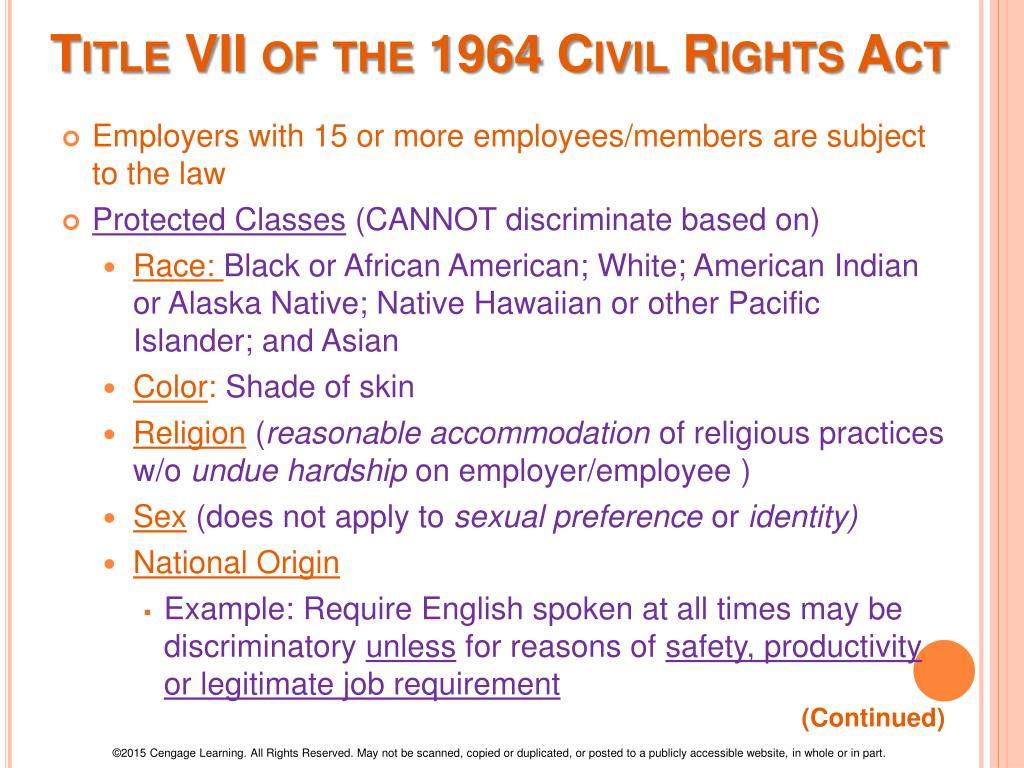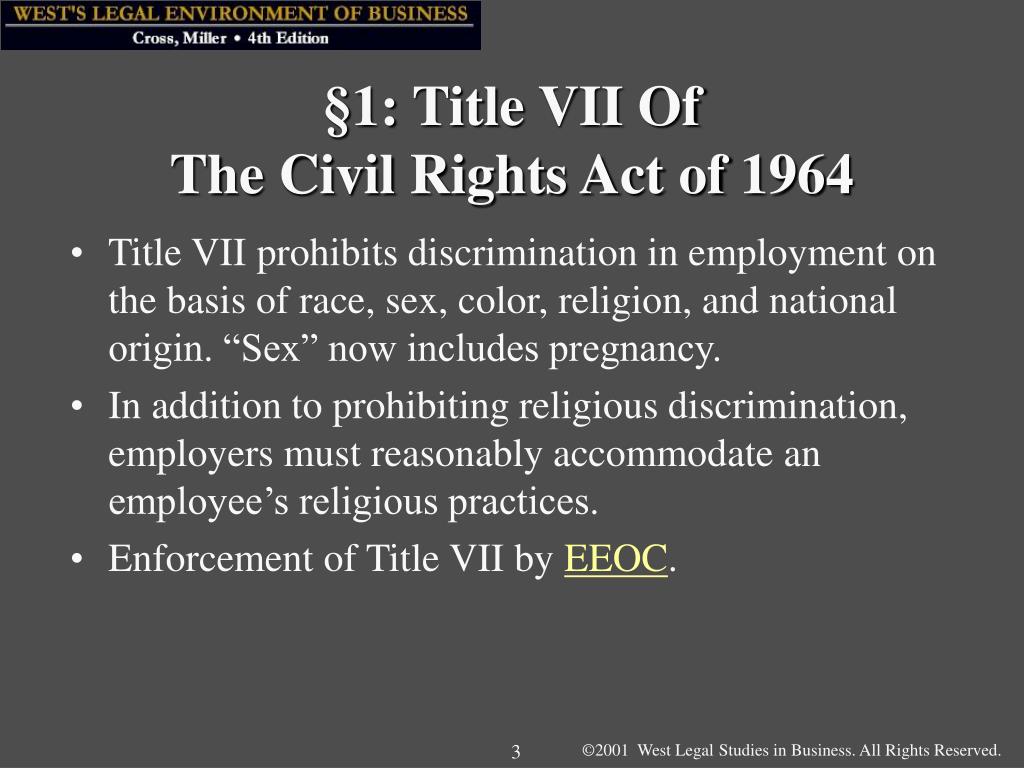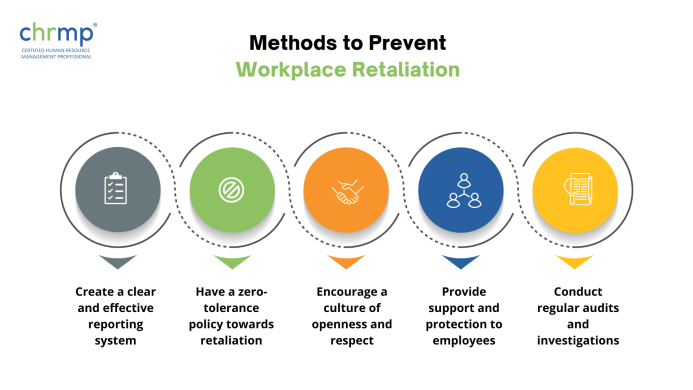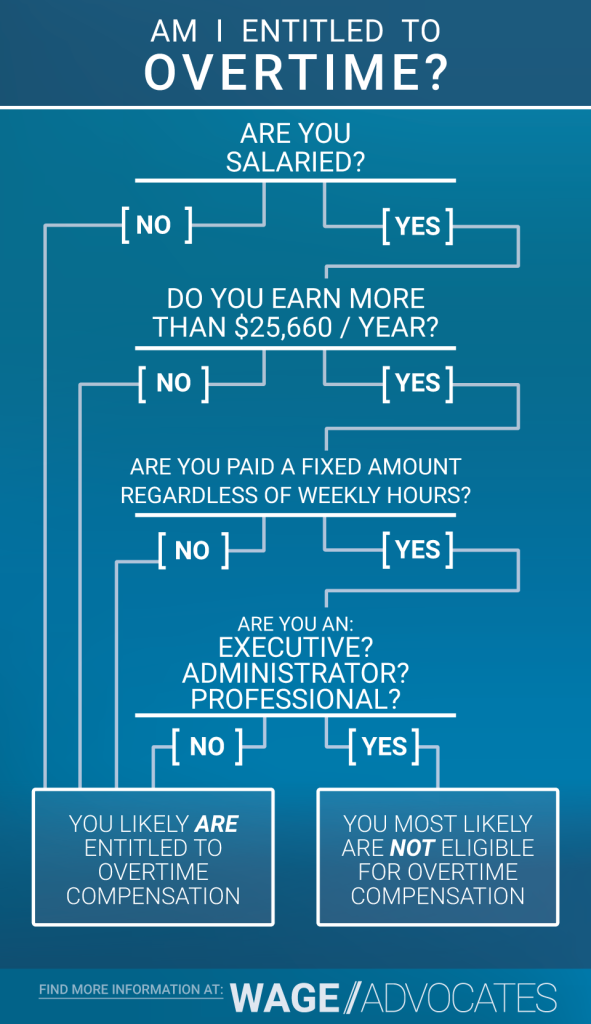
Title VII of the Civil Rights Act: What Every Employee Needs to Know About Their Workplace Rights
Ever felt unsure about what you can or can’t do at work, or wondered if something unfair that happened to you was actually illegal? You’re not alone. Many employees are unaware of a powerful law designed to protect them: Title VII of the Civil Rights Act of 1964.
This landmark federal law is the cornerstone of workplace anti-discrimination efforts in the United States. It plays a crucial role in ensuring fair and equitable treatment for everyone in the workplace. But what exactly does it mean for you as an employee?
This comprehensive guide will break down Title VII in easy-to-understand terms, explaining your rights, what constitutes illegal behavior, and what steps you can take if you believe your rights have been violated.
What Exactly is Title VII of the Civil Rights Act? The Basics.
At its heart, Title VII is a federal law that prohibits employment discrimination based on certain protected characteristics. Think of it as a shield protecting you from unfair treatment just because of who you are.
Specifically, Title VII makes it illegal for employers to discriminate against employees or job applicants based on:
- Race: This includes skin color, hair texture, and certain facial features associated with race.
- Color: Discrimination based on skin pigmentation, shade, or tone.
- Religion: This protects an individual’s religious beliefs, practices, and observances. Employers must reasonably accommodate an employee’s religious practices unless doing so would cause undue hardship.
- Sex: This is a broad category that includes:
- Gender: Discrimination based on being male or female.
- Sexual Orientation: Discrimination based on who you are attracted to (e.g., gay, lesbian, bisexual, heterosexual).
- Gender Identity: Discrimination based on your internal sense of being male, female, both, neither, or somewhere else along the gender spectrum (e.g., transgender, non-binary).
- Pregnancy: Discrimination based on pregnancy, childbirth, or related medical conditions. This includes denying employment, firing, or treating pregnant employees differently than other employees who are temporarily unable to work.
- National Origin: Discrimination based on an individual’s birthplace, ancestry, culture, or linguistic characteristics.
In simple terms: If an employer makes decisions about your job based on any of these characteristics, and it negatively impacts your employment, they are likely violating Title VII.
Who is Covered by Title VII?
While Title VII is broad, it doesn’t cover every single employer or situation. Here’s who it generally applies to:
- Employers: Private employers who have 15 or more employees for 20 or more calendar weeks in the current or preceding calendar year.
- Government Entities: Federal, state, and local governments are also covered, regardless of the number of employees.
- Labor Organizations: Unions are covered by Title VII.
- Employment Agencies: Agencies that help connect job seekers with employers are also subject to Title VII.
What about smaller businesses? If you work for a very small company (fewer than 15 employees), Title VII might not apply. However, many states and local municipalities have their own anti-discrimination laws that often cover smaller employers and may protect additional characteristics (like age or disability, which Title VII does not cover). Always check your local laws!
What Kinds of Workplace Actions Does Title VII Cover?
Title VII doesn’t just apply to getting hired or fired. It covers virtually any aspect of employment, including:
- Hiring and Firing: Refusing to hire someone, or firing someone, because of a protected characteristic.
- Recruitment: How a company advertises jobs and seeks applicants.
- Compensation: Unequal pay, bonuses, or benefits.
- Promotions: Being denied a promotion based on a protected characteristic.
- Training: Being excluded from training programs.
- Job Assignments: Being given less desirable tasks or excluded from certain roles.
- Benefits: Unequal access to health insurance, retirement plans, or other perks.
- Layoffs and Reductions in Force (RIFs): Being disproportionately selected for layoff.
- Workplace Environment: This is where harassment comes in.
Essentially, if an employer’s decision or action regarding your job is based on one of the protected characteristics, and it harms your employment, it could be a Title VII violation.
Understanding Workplace Harassment: A Key Type of Discrimination
Harassment is one of the most common forms of discrimination prohibited by Title VII. It involves unwelcome conduct based on race, color, religion, sex (including sexual orientation, gender identity, and pregnancy), or national origin.
Harassment becomes illegal when:
- Enduring the offensive conduct becomes a condition of continued employment (this is called "Quid Pro Quo" harassment, often associated with sexual harassment).
- The conduct is severe or pervasive enough to create a hostile work environment.
Let’s break down these two types:
1. Quid Pro Quo Harassment ("This for That")
This type of harassment occurs when an employment benefit (like a promotion, raise, or even keeping your job) is conditioned on an employee submitting to unwelcome sexual advances or other protected characteristic-based demands.
- Example: A manager tells an employee they will be fired unless they go on a date with them. Or, a supervisor promises a promotion if an employee agrees to perform a sexual act.
2. Hostile Work Environment Harassment
This is more common and involves conduct that is so severe or pervasive that it creates an intimidating, hostile, or offensive working environment. It doesn’t necessarily have to involve an explicit demand for a favor.
What makes a "Hostile Work Environment"?
It’s not just about isolated incidents or minor annoyances. For conduct to be considered a hostile work environment, it must be:
- Severe: A single, extremely serious incident (like a physical assault or credible threat).
- Pervasive: Repeated, frequent, and unwelcome conduct that consistently impacts the employee’s ability to do their job.
Examples of Hostile Work Environment Harassment:
- Offensive jokes, slurs, epithets, or name-calling based on race, religion, sex, etc.
- Physical assaults or threats related to a protected characteristic.
- Intimidation, ridicule, or mockery.
- Insults or put-downs.
- Offensive objects or pictures (e.g., displaying racist cartoons, sexually explicit images).
- Interference with work performance.
- Unwanted sexual advances, touching, or propositions.
Important Note: The conduct must be unwelcome. The victim does not have to be the one directly targeted; anyone affected by the offensive conduct can be a victim. For instance, a male employee can be sexually harassed by another male employee, or a white employee can be harassed due to their association with a Black co-worker.
What About Retaliation? A Critical Protection!
One of the most common and often overlooked violations of Title VII is retaliation. This occurs when an employer takes an adverse action against an employee because they engaged in a "protected activity."
What is a "Protected Activity"?
This includes:
- Opposing a practice made unlawful by Title VII: For example, complaining to your HR department or manager about discrimination or harassment.
- Participating in an investigation, proceeding, or litigation under Title VII: For example, cooperating with an internal investigation, filing a charge with the EEOC, or testifying in court.
What is an "Adverse Action"?
An adverse action is any action taken by the employer that might discourage a reasonable worker from making or supporting a charge of discrimination. It’s not just about firing or demoting; it can include:
- Demotion, suspension, or termination.
- Undeserved negative performance reviews.
- Reduced hours or pay.
- Exclusion from meetings or projects.
- Unfair scheduling changes.
- Harassment (even more harassment after a complaint).
- Transfer to a less desirable position.
Why is Retaliation Protection So Important?
It’s crucial because it ensures that employees feel safe to report discrimination without fear of losing their jobs or facing other negative consequences. Even if the original discrimination complaint isn’t proven, a retaliation claim can still be valid if the employer punished the employee for making the complaint in good faith.
Your Rights & Your Employer’s Responsibilities
Title VII places responsibilities on both employers and employees to maintain a fair and respectful workplace.
Your Rights as an Employee:
- The Right to a Workplace Free from Discrimination: You have the right to work in an environment where employment decisions are based on merit and performance, not on your race, religion, sex, etc.
- The Right to a Workplace Free from Harassment: You have the right to not be subjected to unwelcome conduct that creates a hostile work environment or is conditioned on employment benefits.
- The Right to Report Without Fear of Retaliation: You can voice concerns about discrimination or harassment, or participate in investigations, without your employer punishing you for it.
Your Employer’s Responsibilities:
- Prevent Discrimination and Harassment: Employers are expected to take reasonable steps to prevent discrimination and harassment from occurring in the first place. This includes having clear anti-discrimination policies, training employees and managers, and fostering a culture of respect.
- Promptly Investigate Complaints: When an employee reports discrimination or harassment, the employer has a legal duty to conduct a prompt, thorough, and impartial investigation.
- Take Appropriate Corrective Action: If discrimination or harassment is found to have occurred, the employer must take effective action to stop the behavior, prevent its recurrence, and remedy its effects. This might include disciplinary action against the perpetrator, retraining, or other measures.
How to Report Discrimination or Harassment
If you believe you’ve experienced discrimination or harassment covered by Title VII, taking action is crucial. Here’s a general guide:
1. Internal Reporting (Often the First Step)
Most companies have internal procedures for reporting discrimination or harassment.
- Review Your Company’s Policy: Check your employee handbook or company intranet for policies on discrimination, harassment, and reporting procedures.
- Report to the Right Person: Typically, this would be your immediate supervisor (unless they are the perpetrator), Human Resources (HR) department, or a designated manager/compliance officer.
- Report Promptly: Don’t delay. Reporting quickly can help your employer investigate effectively and demonstrates that the behavior was unwelcome.
- Be Clear and Specific: When reporting, describe what happened, when it happened, who was involved, and any witnesses. Provide specific examples.
- Keep Records: Document everything:
- Dates, times, and details of incidents.
- Names of individuals involved and witnesses.
- Copies of any relevant emails, texts, or other communications.
- Dates and details of when you reported the issue and to whom.
- Notes on any meetings or discussions about your complaint.
2. External Reporting (If Internal Steps Don’t Work or Aren’t Appropriate)
If your employer doesn’t have a clear internal reporting process, if your complaint isn’t addressed, or if you fear retaliation, you can file a charge of discrimination with the U.S. Equal Employment Opportunity Commission (EEOC).
- What is the EEOC? The EEOC is a federal agency responsible for enforcing federal laws that make it illegal to discriminate against a job applicant or employee.
- How to Contact the EEOC:
- Visit their website: EEOC.gov has extensive information and resources.
- Call their toll-free number: 1-800-669-4000.
- Visit an EEOC office: They have offices across the country.
- Time Limits (Crucial!): You generally have 180 days from the date of the discriminatory act to file a charge with the EEOC. This deadline can be extended to 300 days if your state or local government has an agency that enforces a similar anti-discrimination law. Do NOT miss this deadline.
- What Happens When You File a Charge?
- Intake Interview: An EEOC representative will interview you to gather information and determine if your claim falls under their jurisdiction.
- Mediation (Optional): The EEOC may offer voluntary mediation to resolve the dispute informally.
- Investigation: If mediation isn’t chosen or fails, the EEOC will investigate your charge, which may involve gathering evidence, interviewing witnesses, and requesting information from your employer.
- Finding/Right-to-Sue Letter: After the investigation, the EEOC will either find that discrimination occurred (and may try to conciliate with the employer) or issue a "Right-to-Sue Letter." This letter is your official notice that you can now file a lawsuit in federal court.
What Happens After You Report?
Reporting discrimination or harassment can be a daunting step, but understanding the process can help.
- Employer Investigation: If you report internally, your employer should conduct a thorough, impartial investigation. This often involves interviewing you, the alleged perpetrator, and any witnesses, as well as reviewing relevant documents.
- Corrective Action: If the employer’s investigation confirms discrimination or harassment occurred, they are obligated to take appropriate corrective action. This could range from disciplinary action (e.g., warning, suspension, termination) against the perpetrator to implementing new policies or training.
- EEOC Process: If you file with the EEOC, they will conduct their own investigation as described above. The outcome could be a settlement, conciliation, litigation by the EEOC, or the issuance of a Right-to-Sue letter.
- Legal Action: If the EEOC issues a Right-to-Sue letter, you have a limited time (usually 90 days) to file a lawsuit in federal court. This is typically when you would engage a private attorney specializing in employment law.
Important Nuances: What Title VII DOESN’T Cover
It’s vital to understand that Title VII does not cover all forms of unfairness or workplace issues.
- General Unfairness: Just because a supervisor is mean, plays favorites, or makes a bad decision doesn’t automatically mean it’s discrimination under Title VII. The unfairness must be because of a protected characteristic.
- Age Discrimination: While illegal, age discrimination (for those 40 and older) is covered by a separate law called the Age Discrimination in Employment Act (ADEA).
- Disability Discrimination: Discrimination based on disability is prohibited by the Americans with Disabilities Act (ADA).
- Personal Conflicts: Title VII does not protect against general personality conflicts or disagreements between co-workers or managers that are not based on a protected characteristic.
- Workplace Bullying (Not Based on Protected Class): If bullying isn’t tied to your race, gender, religion, etc., it’s not covered by Title VII. However, many employers have policies against bullying, and some states are beginning to address it.
Why Title VII Matters to YOU
Title VII is more than just a legal statute; it’s a commitment to fairness and equality in the workplace. For employees, it provides:
- Protection: A legal shield against unfair treatment based on who you are.
- Empowerment: The knowledge that you have rights and recourse if those rights are violated.
- A Voice: A mechanism to report and address issues without fear of reprisal.
- Better Workplaces: By holding employers accountable, Title VII helps foster more inclusive, respectful, and productive work environments for everyone.
Understanding your rights under Title VII is a powerful tool. It allows you to advocate for yourself, contribute to a healthier work environment, and ensure that your career path is determined by your skills and efforts, not by prejudice.
Disclaimer: This article provides general information about Title VII of the Civil Rights Act and is not intended as legal advice. Employment laws can be complex and vary by jurisdiction. If you believe your rights under Title VII or any other employment law have been violated, it is strongly recommended that you consult with a qualified employment law attorney or contact the EEOC directly for personalized advice.




Post Comment